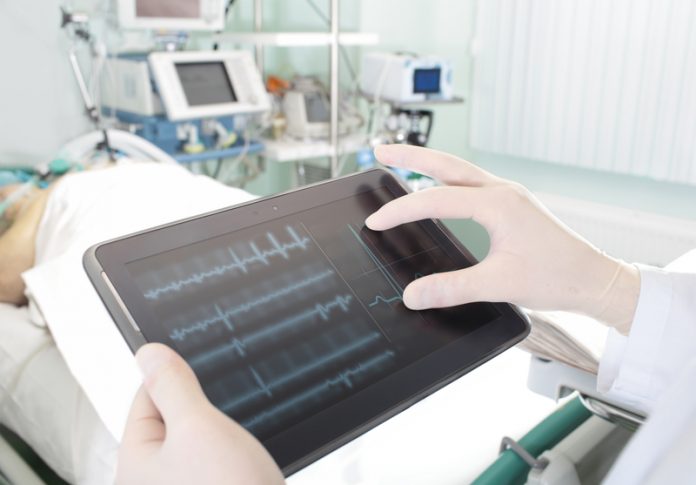DiaGraphIT’s Managing Director, Tone Birkenes, explains how technology can revolutionise the quality of care delivered in healthcare settings
Since 1978, Lise Kristiansen has been suffering from arthritis. When her local hospital improved and simplified patient care by introducing software to systematically measure the impact of medical treatment, it created a whole new world for rheumatic patients through technology.
In need of a means to get a quick and graphic overview of the development of disease activity in relation to the medical treatment, the Norwegian rheumatologist Glenn Haugeberg developed software to help. “It simply wasn’t enough to ask patients how they were feeling. The patient response, such as “better than yesterday”, was imprecise and vague.
Such ICT tools enable patients to log information about their medical situation online, which have great value for both health professionals and patients. With such ICT tools, health professionals don’t have to perform unnecessary duplicate registrations and the clinic saves both time and money. Patients can actively participate in their own health by registering data about their health status into the system wherever they are – and these data are monitored by highly qualified health professionals who can take action if necessary. Initially, Haugeberg’s specific ICT tool was developed for rheumatic diseases. However, since then other medical disciplines have been added to the product portfolio.
In close collaboration with Glenn Haugeberg, Lise Kristiansen has been involved in the development of the healthcare software since the beginning. By evaluating software from a user’s point of view, Lise contributed with feedback on usability and the graphic overview of the development of disease activity in relation to the medical treatment.
“I’m impressed”, said Lise. When using the software, patients can track changes about their own health and well-being and have ownership of their own health.” When Lise was diagnosed with rheumatism back in 1978, there were 64 beds in the Department of Rheumatology at Sørlandet Hospital HF in Kristiansand. Today there are none. “The medication is so much better than it used to be. Very few people are disabled by rheumatism, the treatment is amazing. That’s why research is so important, that’s what moves science and development further.”
Using technology to ensure better outcomes
When healthcare software was introduced to the Department of Rheumatology at Sørlandet Hospital HF, it brought a new reality of technology for the patients. “Many of us hadn´t even seen a computer before, now suddenly a click could show the status of the disease related to the medical treatment, which was very exciting.”
Sørlandet Hospital HF still uses the software in treating their patients, collecting specific and relevant clinical information for patients and health care professionals. Information related to disease activity, health status, quality of life and medical intervention, provides a common platform for patients and doctors to communicate, thus securing the best possible treatment. Data recorded in the software is reused for medical records, for systematic quality work in the clinic, for the national quality registers and for research.
Tuulikki Sokka-Isler, Head of Rheumatology at Jyväskylä Central Hospital in Finland, is extremely happy with the new functionality for data extraction. He said, “It expands the use of the software from being a clinical tool to a clinical research tool. Data that are collected in a real-world setting can now easily be extracted in an analysable format for collaborative and comparative research among all users around the world.”
At Jyväskylä Central Hospital, the software feature for remote monitoring is also in use. “As the first step, all referrals and return patients are informed about the option to complete the software remotely. This week several young people completed the software at home before the visit. This is a great step forward! The web self-assessment is simply up-to-date and fantastic”, concludes Sokka-Isler enthusiastically.
For Hanne Vestaby, a nurse in the Department of Rheumatology at Sørlandet Hospital HF, such new technology caters for a much more targeted way of working. “I work as a nurse in rheumatology care in the outpatient clinic where I conduct my own patient consultations. With the new technology, I can rely on explicit outcome measures and use that as a solid foundation for the conversation I’m having with the patient.
“The system provides status per patient, and I use that information actively when communicating with the patient. This often motivates the patients and gives them confidence in what they are doing themselves, indeed has an effect. After having used online patient self-assessment questionnaires, many patients report a sense of finally being taken seriously, as the status information they provide, is direct, and not filtered through healthcare professionals. My experience is that it makes us all work more efficiently, and gives us a better time to follow up on other patient needs or concerns.”
Lise Kristiansen requests extensive use of such software in more clinics. “The software generates patient involvement and I believe more clinics should apply this type of technology to secure the best possible treatment. It is user participation at its best.”
Tone Birkenes
Managing Director
DiaGraphIT
Tel: (+47) 94 80 70 32
tone.birkenes@diagraphit.com











